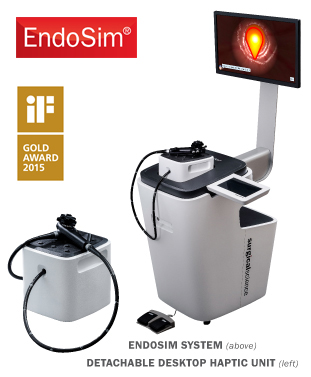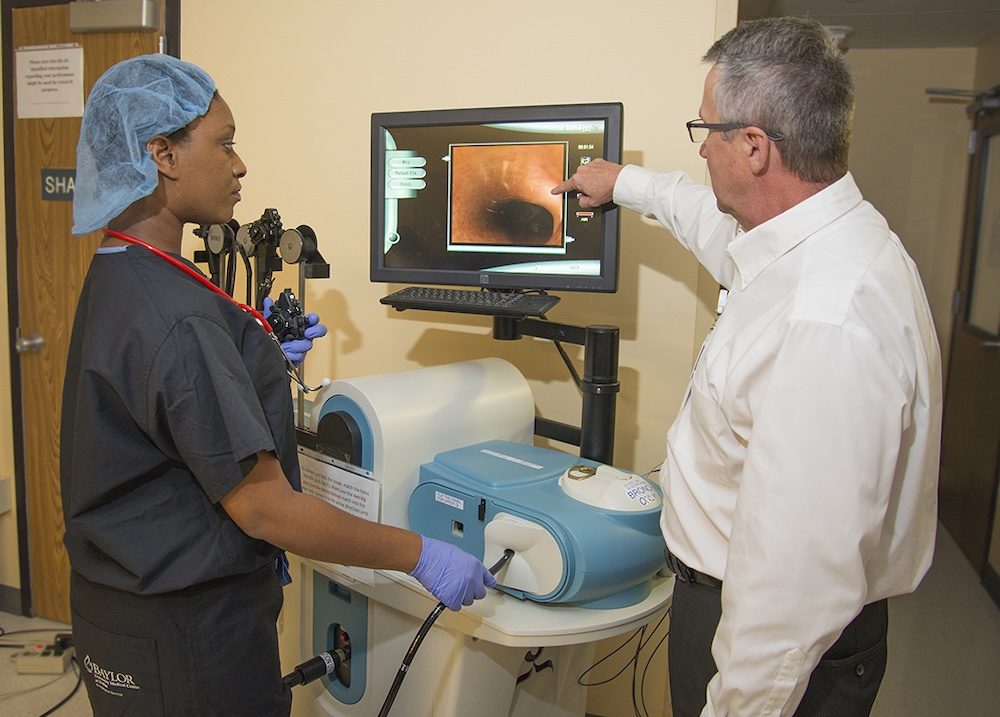Endoscopy Simulator
An Endoscopy Simulator, aka an Endoscopic Simulator, is an educational and training tool used as a means of instruction for learners and healthcare professionals. Above all, the goal of using Endoscopy Simulators is to achieve the highest quality diagnostic-therapeutic result while minimizing the risks to the patient.
While learning the skills necessary to perform endoscopy requires experience and time, this knowledge is also very much dependent on the ability of the trainee and the feedback given by an instructor. This is why having an experienced supervisor to oversee each training module is imperative.
In the past, inexperienced residents and learners will begin their training by performing endoscopy on patients. The concern with this method of education and engagement is that procedure times can become prolonged, patients may experience increased discomfort and pain and, in the worst case scenarios, errors may occur.
Sponsored Content:
With ever-increasing endoscopy costs, along with an increasing demand for advanced, invasive procedures which minimize upper gastrointestinal endoscopy, colonoscopy and flexible sigmoidoscopy training opportunities, endoscopy simulation has been considered to be a newer method of maintaining patient safety. This safety is achieved through a combination of reducing endoscopy errors and achieving better and faster training results, according to the article, “Virtual reality simulators for gastrointestinal endoscopy training.”
The benefits of using Endoscopy Simulators have become more apparent over the last few decades as the overall use of these products has become more widespread. Likely recognizing the training success, Endoscopy Simulators are currently used by a number of medical centers in various countries worldwide, and are actively used in training modules.
Through their use-to-date, these virtual Endoscopic Simulators have demonstrated their great potential in endoscopy training. Endoscopic Simulators have enhanced training procedures for upper and lower gastrointestinal endoscopy. Additionally, the benefits are proving more and more prominent across inexperienced trainees. The significant acceleration of training procedure to the threshold that trainees are said to have acquired adequate and acceptable skills for professional use have thus far shown positive validation of a simulator
How Endoscopy Simulators Work
Sponsored Content:
These simulation products are integrated systems that consist of mechanical parts and software. For the training products to operate efficiently, they must run along with a computer program that simulates the procedure of endoscopy. These training procedures use endoscopic images of the gastrointestinal tract while the trainee handles an endoscope that is attached to a processor. Then, the processor is the tool that sends a signal to a monitor for review.
More specifically, the moves of the endoscope will interact with the monitor image, and this interaction provides the trainee with a virtual environment for practicing theoretical and practical knowledge. The environment also works to simulate many different conditions a trainee may later experience while operating first-hand in the field.
Endoscopic Simulator Examples
There are currently two virtual simulators available to purchase as well as others available for non-commercial use: the GI Mentor (Simbionix, Cleveland, United States) and Accutouch Simulator, recently renamed as CAE EndoVR Simulator (CAE Healthcare, Montreal, Quebec, Canada).
First, the GI Mentor, a product of Simbionix, a Cleveland, Ohio-based company with an Israeli-based research unit, is an Endoscopy Simulator produce that offers a wide variety of virtual tasks for learners to complete. This product is suitable for upper and lower endoscopy training, and provides a large library of modules ranging from basic endoscopic skills and simple clinical procedures to more complicated situations (such as emergency gastric bleeding.)
The GI Mentor also comes with modules for endoscopic ultrasound (EUS) and endoscopic retrograde cholangiopancreatography (ERCP) training. Overall, this simulation program is especially useful in training with features like a pain indicator and scope locator. By utilizing the GI Mentor, trainees also have the opportunity to practice on virtual patient cases based on actual medical data.
Another product is the Accutouch Endoscopy Simulator, a simulation product redesigned in 2012 simulator by CAE Healthcare, which is headquartered in Canada. This tool provides trainees and trainers with a new, more realistic haptic sense of endoscopy. These modules train learners on esophagogastroduodenoscopy (EGD), colonoscopy and endoscopic retrograde cholangiopancreatography (ERCP).
Additionally, the Accutouch Endoscopy Simulator is readily available for purchase, and helps the trainee to acquire skills necessary when conducting a polypectomy, biopsy and hemostasis. CAE’s simulator offers a complete endoscopy experience by combining the endoscopy procedure with the background of a virtual patient as well.
When conducting training with the Accutouch Endoscopy Simulator, endoscopy starts with the patient’s history and various parameters change during endoscopy, such as vital signs and patient response to pain and discomfort. Next, the learner is assigned to achieve the ideal virtual sedation without reducing the patient’s oxygen saturation. Lastly, a complete review of all actions will be available from the instructor, expert or overseer.
Also making strides in the endoscopy simulation realm, CAE’s EndoVR offers endoscopy training solution with performance feedback. With the EndoVR, endoscopic trainers and trainees are able to capture metrics, set parameter levels and efficiently upload supplemental multimedia content to maximize learning. These healthcare learners and trainers can also create a comprehensive learning pathway, name this pathway and then assign the relevant procedures or cases.
One key feature included with the EndoVR is haptic feedback, allowing learners to get a feel for upper and lower GI and bronchoscopy flexible endoscopy procedures. Dynamic performance reporting also creates a way for custom reporting, allowing instructors to chart progress for one trainee or for a whole group. Then, real patient data can be used to train using clinical cases developed from real patient data and physiological models. Lastly, replica flexible endoscopy scopes offer learners the chance to become familiar with replicas of the flexible endoscopy equipment they will be using in situations.
In addition to these products, there are also Endoscopy Simulators available for non-commercial use. An example of these non-commercial products is the Endo TS-1 simulator, a product of Olympus Keymed, Essex in the United Kingdom. The construct validity of this product has thus far been tested in several trials.
Endoscopy Simulators Latest News

Surgical Science Shares 2016 EndoSim Product Updates
Sponsored Content:

















